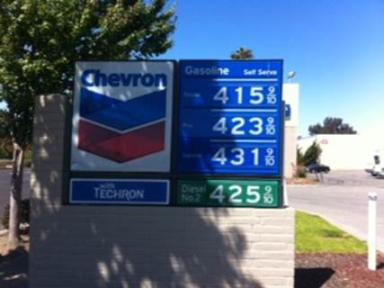| E-Mail Forum | |
|
|
|
| Chip Johnson - Chevron Owes Richmond More Than Damages August 10, 2012 |
|
In a column in the August 9 San Francisco Chronicle, Chip Johnson broached the issue of what Chevron owes Richmond for the most recent fire. Some would maintain that Chevron has already prepaid that debt with its large annual payment of property and utility user taxes.Others, like Johnson, believe property and utility taxes are just the baseline that all property owners share, but that the fire resulted in substantial additional tangible and intangible costs that Chevron can well afford and should pay. What is the price tag for six hours of shelter in place for well over 100,000 people? After all, home confinement is what they use now in lieu of jail time to relieve crowded facilities. And didn’t Ross Mirkarimi lose his job over and plead guilty to false imprisonment? At the end of the day, what’s the difference between an order to shelter in place when that’s really not what you want to be doing and false imprisonment or home confinement? The result is exactly the same. The interruption in the lives of 100,000 people would be a crime under any normal context.Richmond has worked hard in the last few years to improve its quality of life and its image. Crime is down; employment is rising; Lawrence Berkeley National Laboratory is coming to town. Another segment of the Bay Trail is completed; the Rosie the Riveter Visitors Center Opens; the Plunge is back in business and what a night at the Craneway on the 3rd of July!Then this. How much the Chevron fire set Richmond back is hard to quantify, but no one would seriously propose that it made Richmond more attractive or improved the quality of life. No one would argue that it will spur motivation of businesses to move to Richmond and homebuyers to uptick Richmond on their shortlist. It certainly did not add value to Richmond’s already fragile housing stock. There is a cost, and Chevron should pony up. Back in 2003, I proposed a means to exact a charge that would approximate the cost of sheltering in place. See Toxic Release and Siren Nuisance Ordinance Reintroduced, August 12, 2003.It would have exacted a penalty of $6,000 per minute for the time in which Richmond or portions thereof were under a shelter in place alert. It didn’t even get a second. It was sent to committee by the City Council where it died. From the Minutes of the September 2, 2003, City Council meeting:In the matter to consider adopting an ordinance amending Chapter 9.22 of the Richmond Municipal Code specifying an additional nuisance and providing penalties, Councilmember Butt gave an overview of the matter. He stated that the rules for when warning sirens are set off are explicit. He stated that when a siren is set off, it severely disrupts life in the City of Richmond. If it is during the day, roads are closed, businesses close, schools close. He stated that there should be consequences when this happens. He stated that the ordnance is an effort to set up and define this as a public nuisance and to provide consequences. He stated that this is the second time he has brought this matter before the Council. Discussion ensued. Councilmember Bates commented that he does not know if the City has the legal authority to impose this type of sanction. Vice Mayor Penn stated that the ordinance is quite comprehensive and impacts many persons. She stated that she would like to discuss the matter with the Public Safety, Public Services Standing Committee members and the entities that will be impacted. Councilmember Rogers stated for the record that he is not in favor of the matter. He stated that the City has large institutions that provide significant tax base and significant jobs to the City. Following discussion, Vice Mayor Penn referred the matter to the Public Safety, Public Services Standing Committee for further discussion.Had that ordinance passed, Richmond would be sending Chevron a bill for $2,160,000, about what it would take to balance our 2012-2013 budget.To add insult to injury, Chevron has not only failed to compensate Richmond for its losses; it has jacked up gas prices in Richmond just like all the other oil companies. In an August 8, 2012, Bay Area News Group article, “Gasoline prices to spike in Bay Area following Richmond refinery fire” by By George Avalos and Dana Hull, Chevron spokesman Lloyd Avraml said “Despite the production woes following the fire, Chevron officials said shortages of gasoline won't materialize in California.” Avram was quoted as saying, “There is adequate supply of gasoline product in the California market to serve consumers' needs."So if the gasoline supply is adequate, according to Chevron, why are gas prices skyrocketing? And why is Chevron joining the frenzy? It would seem that one thing Chevron could do for Richmond is to stabilize gas prices at least at Richmond stations. But no, Chevron is making Richmond residents, like everyone else, pay for its mistakes while making even more profit for its shareholders.Gas prices at Chevron stations in Richmond that were in the $3.85 - $3.95 range are now in the $4.15 - $4.25 range! |
|
|
|


